FROM THE MAGAZINE
How to get your swing back and build something reliable

If your driver shots are curving uncontrollably or you’re making poor contact with your irons, do you try to put a band-aid on it mid-round and hope the problem goes away, or do you get to the practice tee some time after the round and address the root of the problem? If you’re like most golfers, I know your answer.
It’s understandable to want a quick fix to your ball-striking issues to simply enjoy the day, but the compensations you choose often make things worse in the long run. Rather than survive another round with some makeshift adjustments, you’ll be much better off stripping those manipulations from your swing and instead making some quality changes that take care of your issues over a whole season, not just the back nine.
In this article, I’m going to identify the four most common problems I help golfers correct—slices and hooks with a driver off the tee and chunks and thins with irons off the turf—and explain why the quick-fix approach is hurting more than helping and what to do instead. If you get to the range and work on my keys and drills to improve your path, body rotation and contact, you’ll be making quality improvements to your game. —With Madeline MacClurg
Larkin, Golf Digest’s No. 1 teacher in Virginia, is at the Club at Creighton Farms in Aldie. She became a Golf Digest Teaching Professional in 2021.
DRIVING
SLICE AND HOOK ISSUES ARE OFTEN EXACERBATED BY THE DESIRE FOR IMMEDIATE IMPROVEMENT. HERE ARE SOME EXAMPLES.
SLICE FIX
SET UP SO YOU SWEEP IT
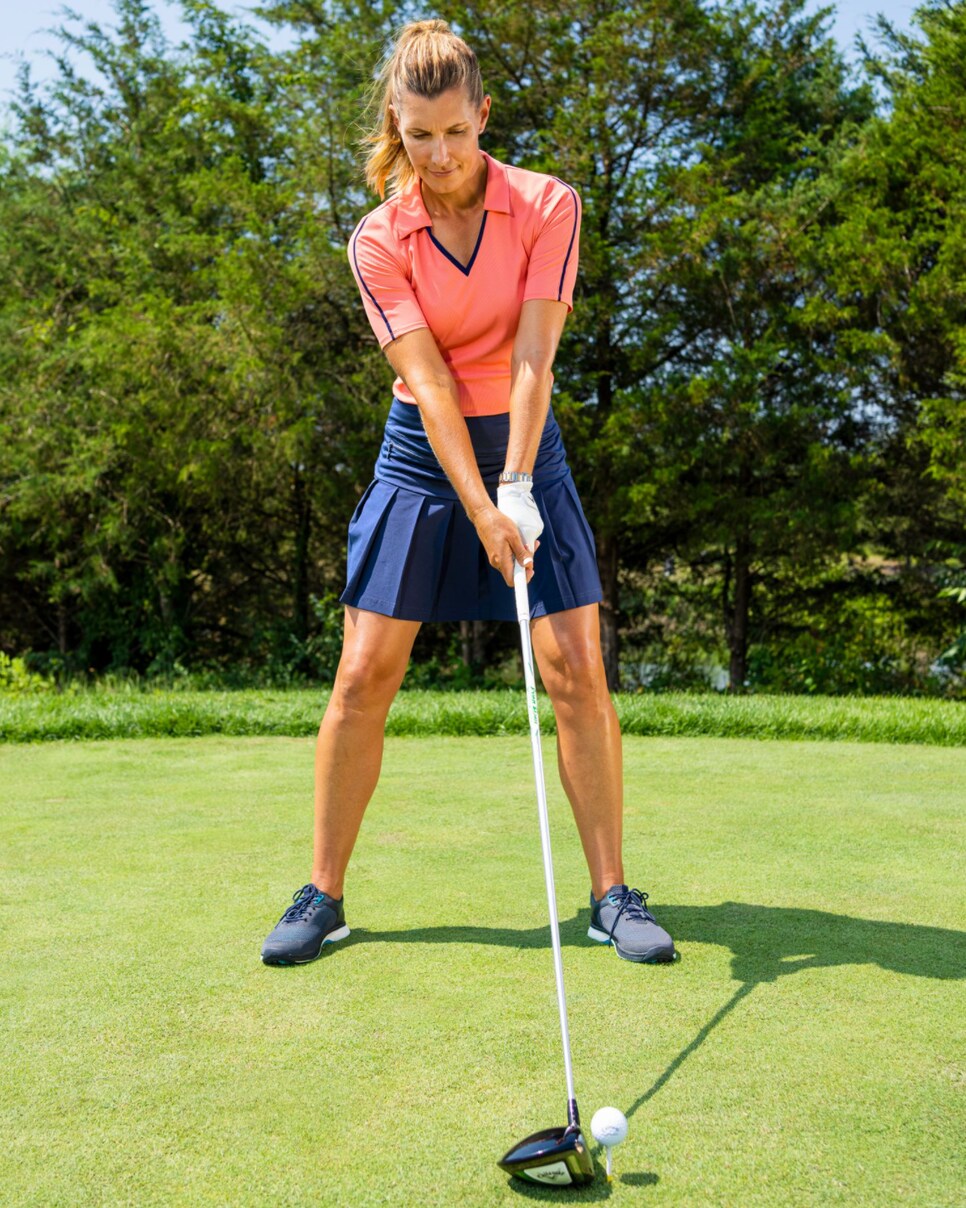
Slicers usually swing down too steeply on an out-to-in path, so they tee the ball low. That’s a classic band-aid fix just so they can make decent contact—but they still slice. To make good contact and correct the slice, what they should do is tee it higher—half the ball above the driver. This encourages an in-to-out swing path and allows you to hit up on the ball—two key ingredients to driving it straighter, or even drawing it. Also, to help ensure you catch the ball just as the driver begins to ascend, address it so it’s aligned with your lead heel (above).
STAY WIDE AND CONNECTED
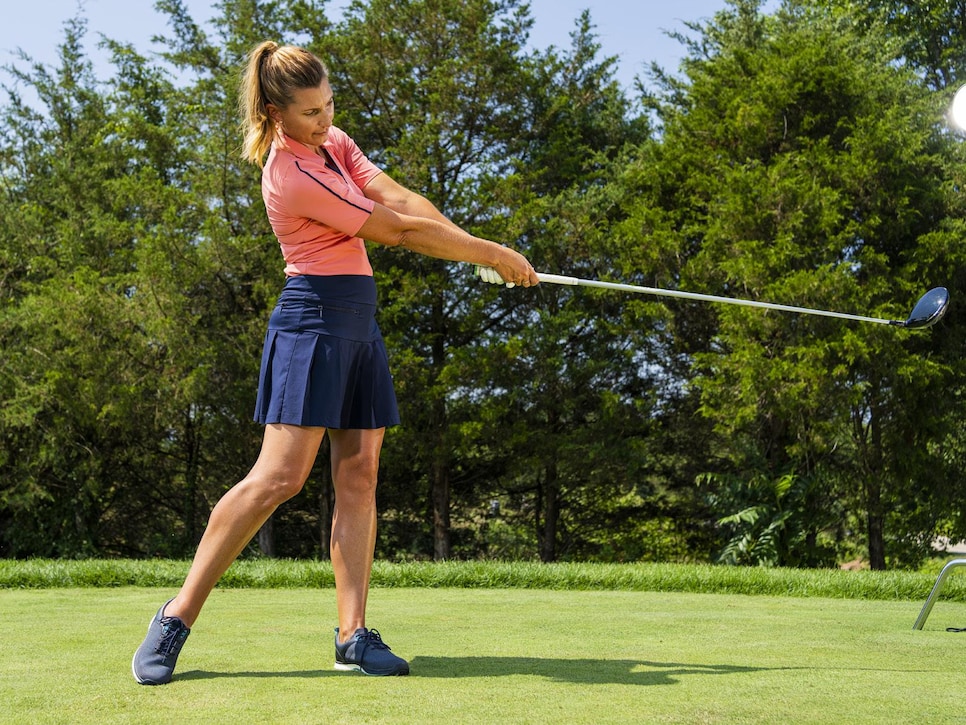
Another misguided slice fix that almost always leads to poor contact is to try to steer the clubhead into the ball as straight as possible, which typically causes the lead arm’s elbow to bend through impact—the classic chicken-wing look. Squaring the clubface at impact is important, but it needs to be the result of a swing with good body rotation and no collapse of the lead arm. To get a feel for it, tuck a glove under the lead armpit and make a few swings without dropping it. You should feel like your arms are more connected to your body and moving in sync with its rotation. This will help square the clubface without having to steer it. Use your through-swing as a checkpoint. As you’re turning through your shot, ensure that the butt of your club is pointing back at your belly button (above).
HOOK FIX
LEAD WITH YOUR HEEL PAD
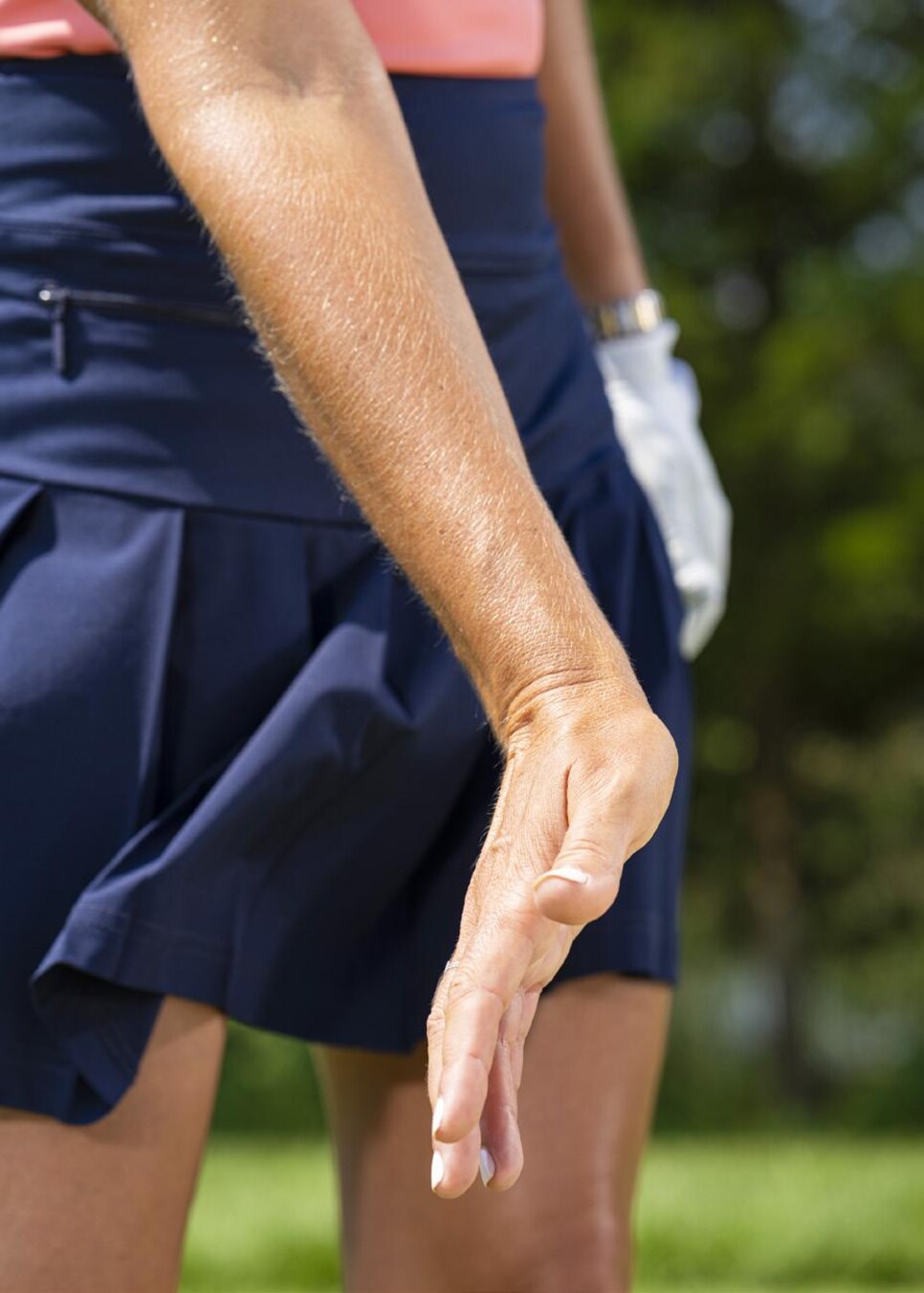
Golfers who hit hooks often aim way right of their target hoping to get the ball to curve back into the fairway. Instead, they should aim straighter and reduce their hook by quieting overactive hands. The heel pad of your trail hand should lead the fingers through impact (above) to prevent the clubface from shutting. As you practice this, note how that palm seems to mirror your clubface. You want them both facing the target at impact.
LET THE BODY WIN THE RACE
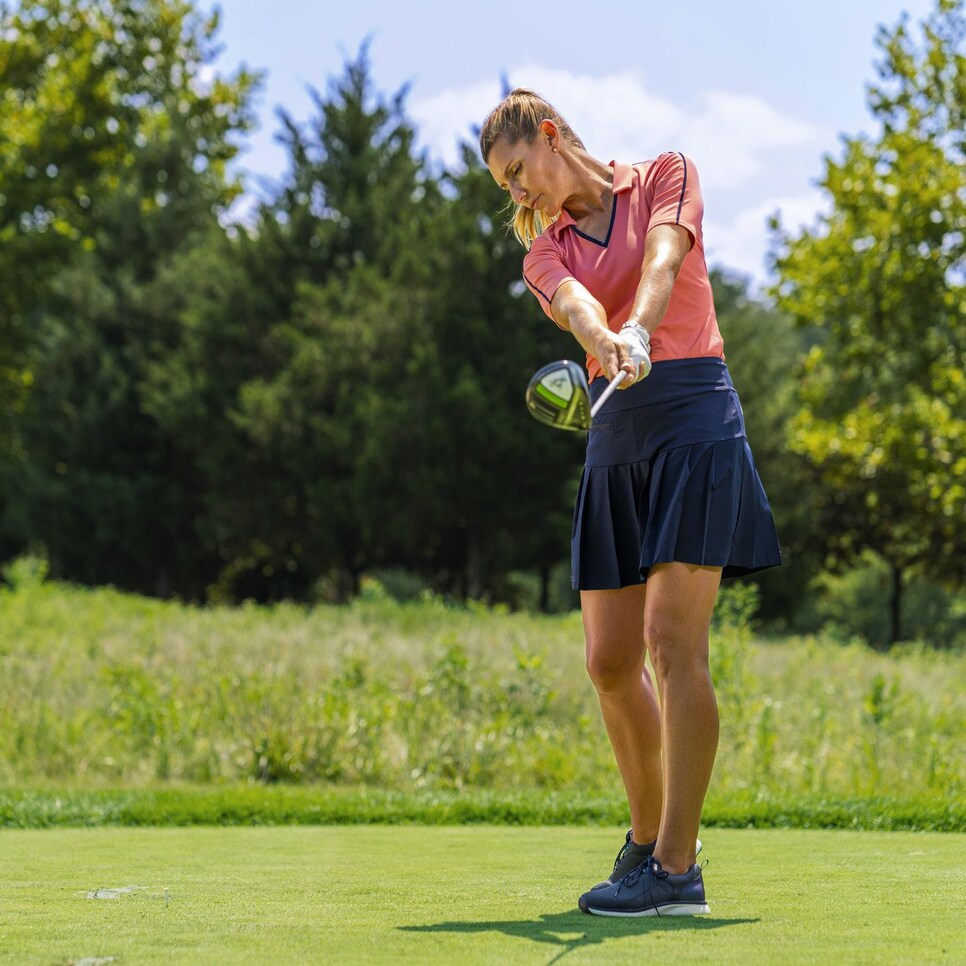
Just like slicers who try to steer their way to straighter shots, hookers do it, too. But an armsy swing will promote a shut clubface, not prevent it. Instead, think of your body as your engine and the arms as followers. Don’t let your engine stall. Keep your core turning through impact, and feel your upper body guiding your arms and club down the target line (above). When the arms follow, the path and clubface will be more neutral.
IRONS
POOR CONTACT WITH IRONS IS ALMOST ALWAYS THE RESULT OF TRYING TO HIT THE BALL INSTEAD OF SWINGING THROUGH IT.
CHUNK FIX
GET BACK TO THE BALL WITH GOOD POSTURE
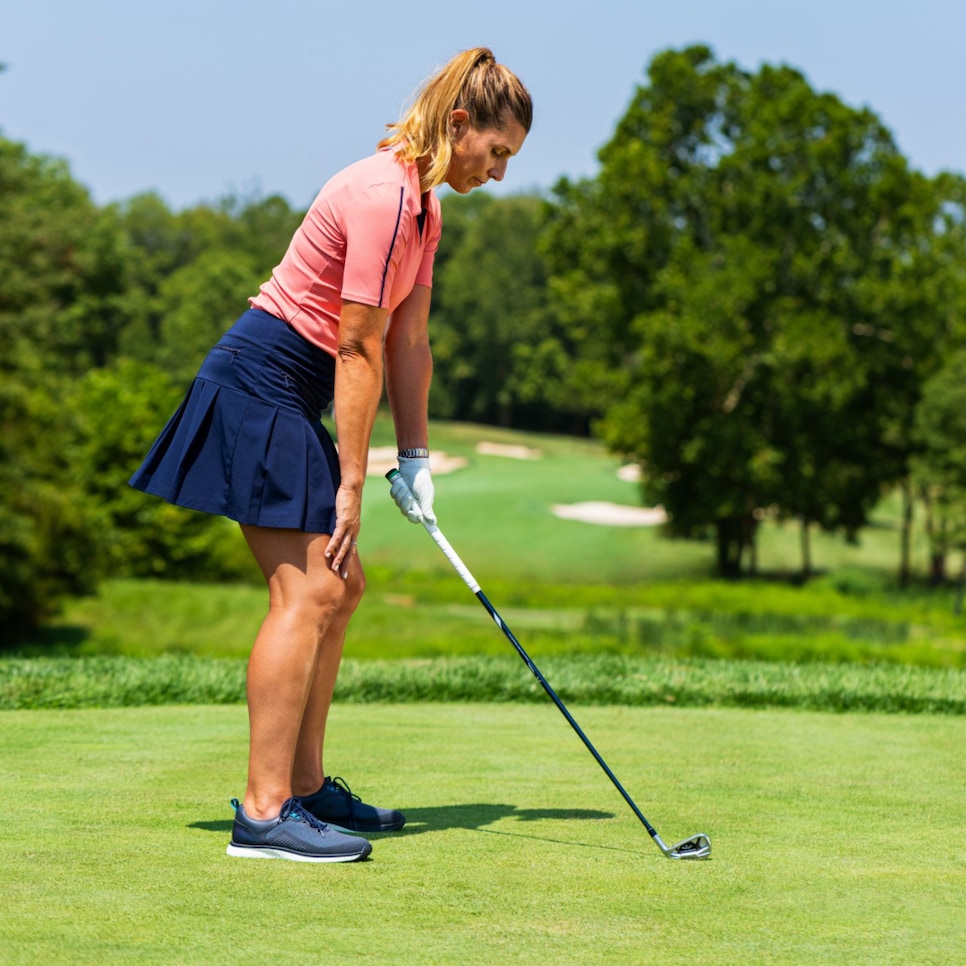
When golfers dig behind the ball with their irons, they start standing taller at address as a quick fix. Unfortunately, a posture that’s too upright brings the feet closer to the ball, encouraging a steeper swing plane and even more fat shots. To get into good posture that lets you swing in balance and not crash the club down behind the ball, use this drill: Grab a club in your lead hand and stand tall with your knees slightly bent. Hinge at your hips and let your trail hand slide down the trail leg until it reaches the knee (above). Now take your grip; you’re in good address posture.
STAY IN BALANCE
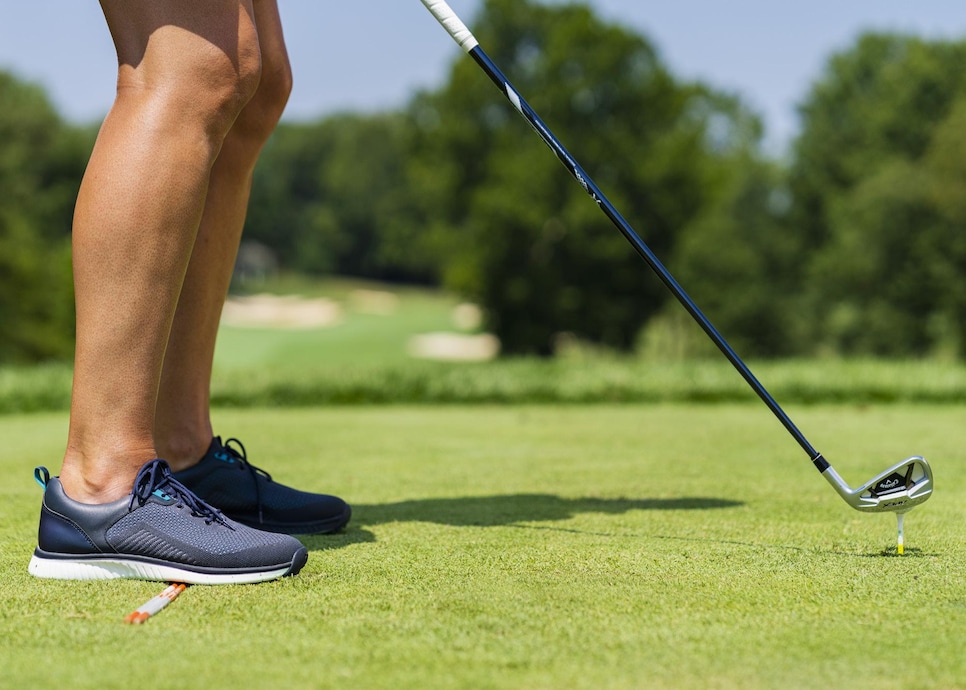
Golfers who chunk their irons often try sitting back into their heels to avoid lunging at the ball. The only way to hit the ball from that position, though, is to lunge toward the ball through impact, and then you’re right back to digging. The proper weight distribution for cleaner contact can be trained by putting alignment rods under the balls of your feet (above). The rods will give you awareness of where your weight is, and how to maintain a sense of balance between the toes and heels. You’ll also notice that I’m hitting my iron off a high tee here. This is another drill to help cure digging by helping you manage the low point in your swing. By hitting off a high tee, you have to shallow your swing to the level of the ball or you will swing right underneath it.
THIN FIX
FEEL MORE ON TOP OF THE BALL
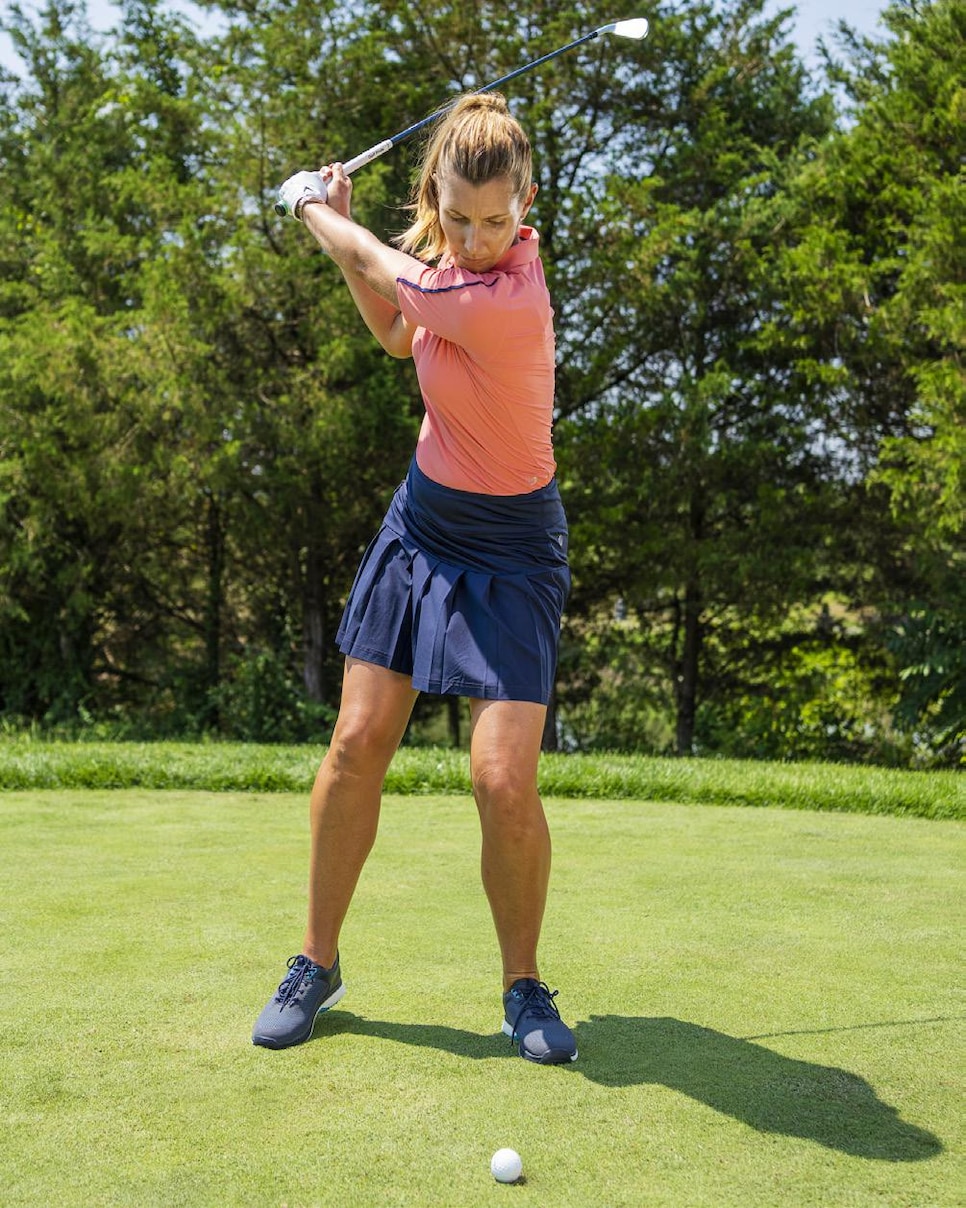
Players who skull the ball often slide away from the target in the backswing, which causes them to try to find an unorthodox way to get the ball airborne while swinging from the back foot. Instead, set your weight more on your front foot and keep it there throughout the swing. This allows you to feel more on top of the ball, so you can compress it and take a good divot. Imagine the target side of your body is against a wall, so you form a straight line with that shoulder, hip, knee and ankle. Then hit shots rotating around your lead side, keeping it pressed on the wall (above).
DRIVE DOWN AND THROUGH FOR BETTER CONTACT
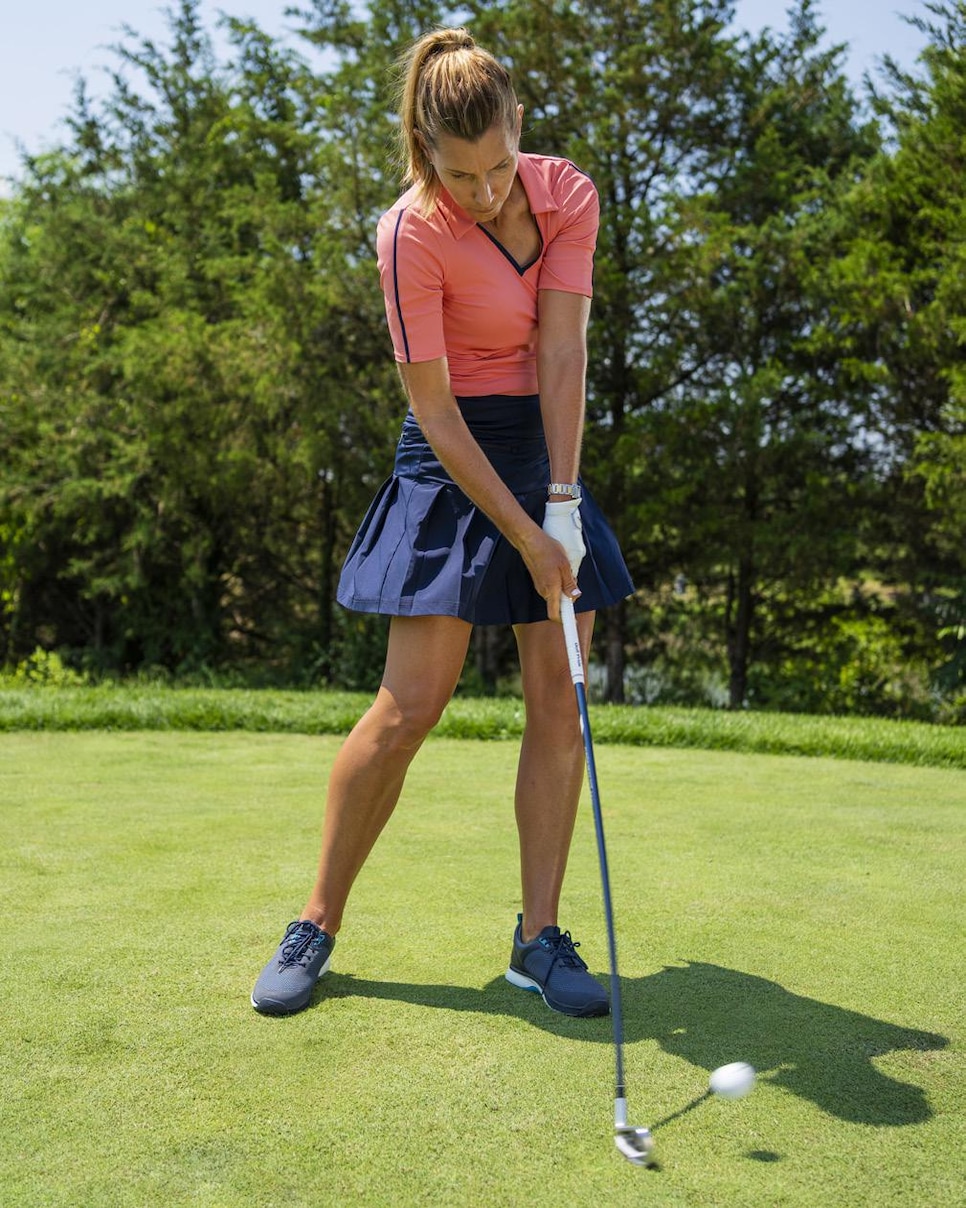
Many players who thin it start to move the ball back in their stance to make better contact—and that might work briefly, but the shots fly too low. Over time, the golfer will then try to scoop the ball up to raise the trajectory, and then it’s back to the skulls. Instead, let’s do the opposite. To help your contact, practice hitting shots with the ball off your lead heel at address. You’ll soon realize you have to shift your weight forward and drive down and through to hit crisp irons (above). Practice this way, but play the ball in a more centered position after you groove this move.
DRILLS
HERE ARE THREE OF MY FAVORITE WAYS TO PRACTICE BALL STRIKING, NO MATTER IF YOU SLICE, HOOK, CHUNK OR THIN YOUR SHOTS.
CHECK YOUR PATH AND ADJUST IF IT IS CAUSING THE CURVE

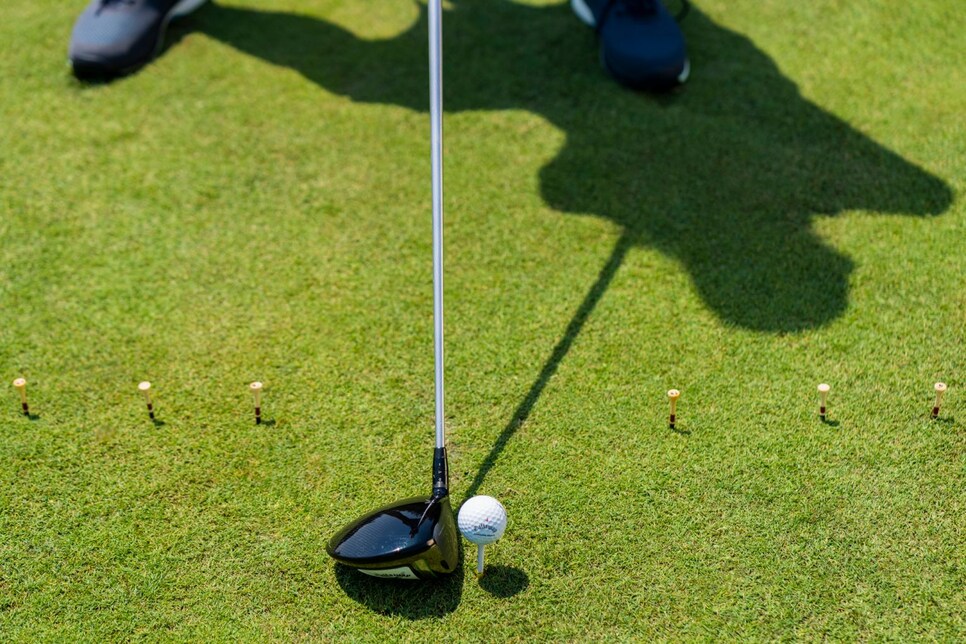
Along with the orientation of the clubface, the path your driver takes through impact greatly influences how much the golf ball curves. That’s why I love this drill. It not only tests your current path to see if it’s too out to in or in to out in relation to the target, it also improves it over time, getting it a lot closer to neutral if you keep doing it. After teeing up a ball, use a handful of other tees to create guideposts—a neutral swing arc—about a clubhead inside your target line. Note how the tees are arcing (above). Your goal is to miss the tees as you swing the club and hit drives at your target. If you do hit the tees, you’ll receive immediate feedback on your swing path. If you strike the tees ahead of your ball, you’ll know it’s because you were swinging out to in. If you strike the tees behind the ball, you’ll know you’re coming too far from inside the target line. The club should travel on a slight arc.
USE YOUR BODY TO SEQUENCE A QUALITY THROUGH-SWING
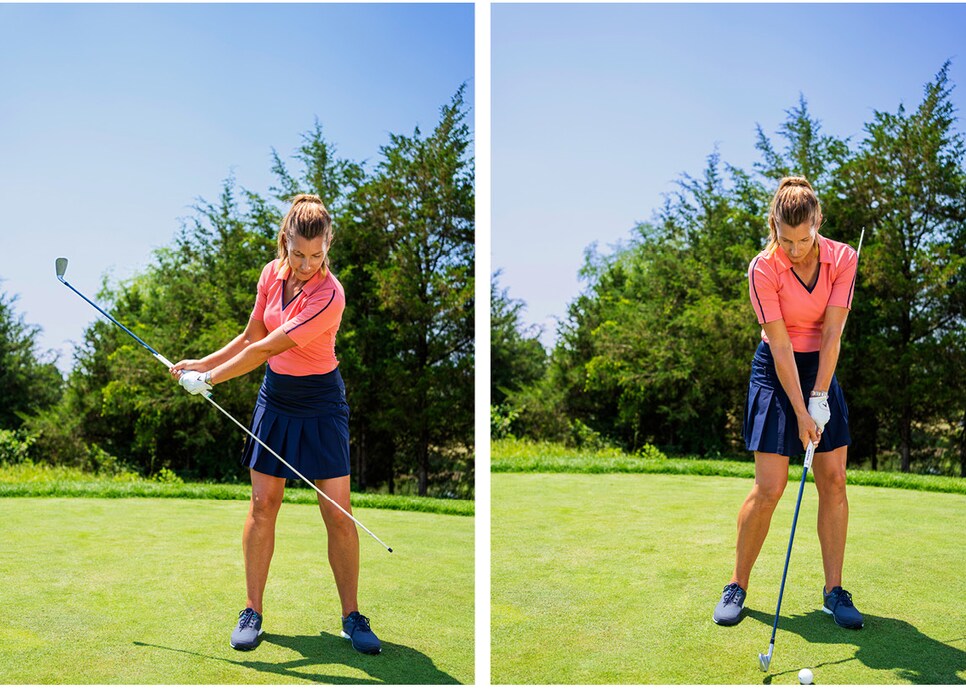
For better rotation and sequencing in the through-swing, create an extension of your club’s shaft with an alignment rod tucked under your lead arm at address and then start a half-speed swing (above, left). Keep swinging—all the way down into the ball. If your body stops rotating or your swing is out of sync, the rod will bump your ribs around impact. If you keep rotating, feeling like the arms and club trail the rod (above, right), you won’t get struck. That feedback should help you remember to keep turning through the ball when you are out on the course.
GET THE BOTTOM OF THE ARC IN FRONT OF THE BALL
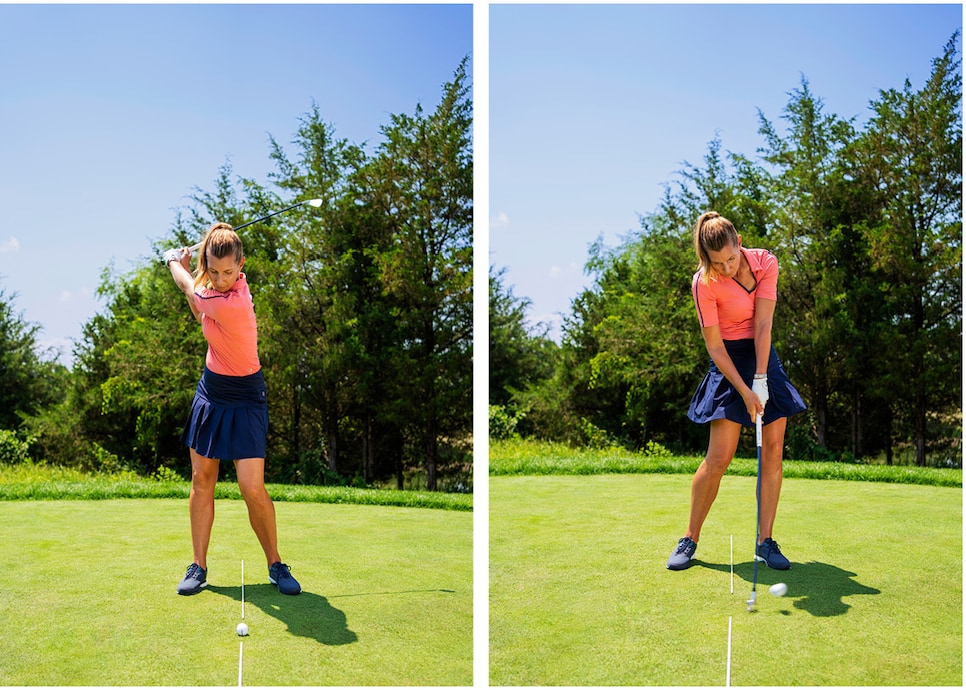
Using two alignment rods, form a small gate about six inches wide to swing your club through as you hit shots, making sure the rods are in line with your ball (above, left). After you strike it (above, right), note where your club bruised the grass or started a divot hole. That spot is the low point of your swing, and it should be in front of the alignment rods or you’re not getting the most out of your iron shots. Good iron players hit the ball first, and the club continues to move downward a few more inches after impact. If you can routinely do that, you’ll become a great ball-striker.
Editor's Note: This story appears in Issue 7 of Golf Digest. Read our latest issue in its entirety through our digital-edition app.